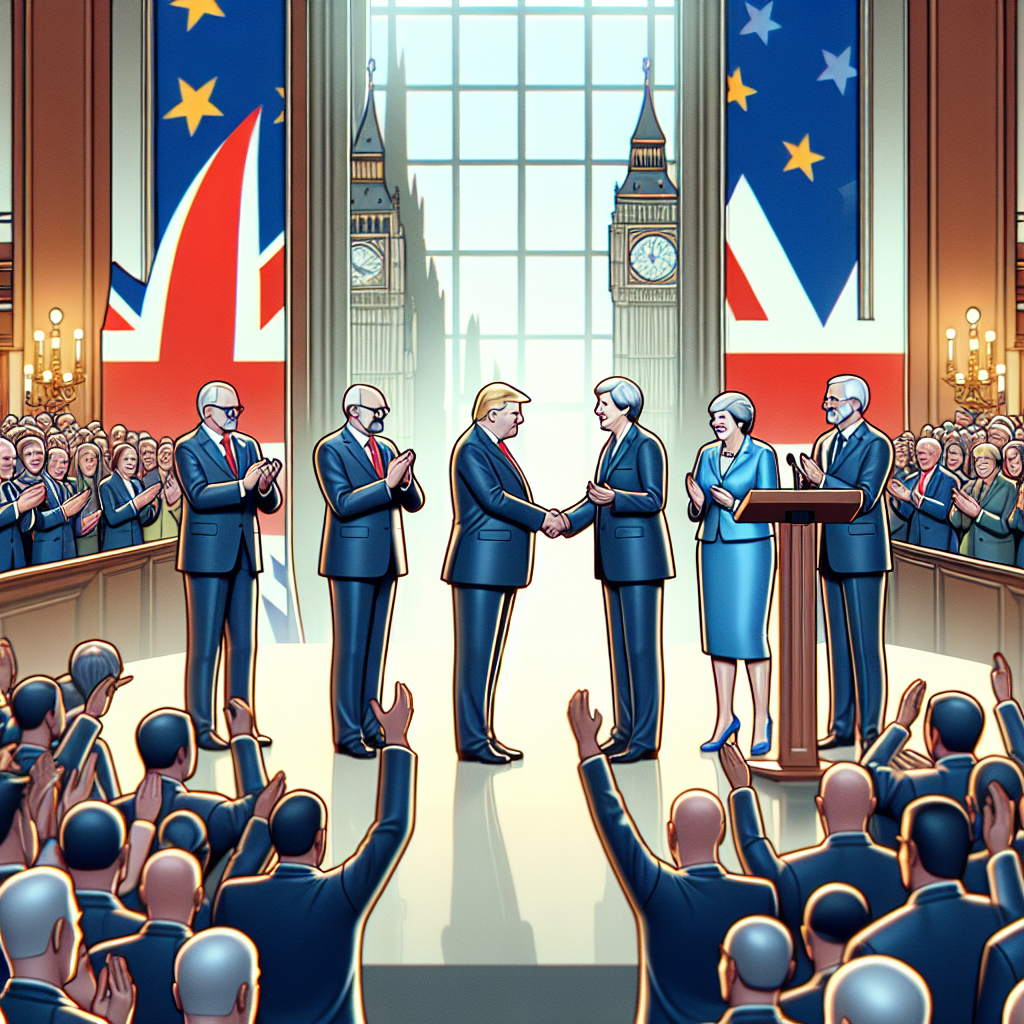On May 8th, President Donald Trump and the UK government jointly announced a significant bilateral trade agreement aimed at reducing tariffs on key goods and expanding market access. This marks a milestone in their economic relationship and is seen as a strategic move to strengthen the special bond between the US and UK, as well as influence UK’s policies towards China and soften the EU’s stance. The agreement is expected to inject new energy into the economies of both countries and could have far-reaching implications on the US-China trade war and global trade dynamics.
The US has a trade deficit with nine out of its top ten trading partners, with the UK being the only exception where there is a trade surplus. Trade relations between the US and the UK involve automobiles, oil, aircraft components, and pharmaceuticals.
The core of the US-UK trade agreement revolves around tariff adjustments and market access. The US will reduce tariffs on UK automobiles from 27.5% to 10% and set a quota of 100,000 vehicles, which aligns closely with the UK’s 2024 total automobile exports to the US. Additionally, UK-produced Rolls-Royce engines and aircraft components will enjoy duty-free access to the US market.
In terms of steel and aluminum products, the US agreed to reduce tariffs on related UK goods to zero. The UK government welcomed this move, expecting it to effectively save thousands of jobs in its automotive and steel industries.
Market access for agricultural products is another highlight of the agreement. The UK pledged to provide a duty-free quota of 13,000 tons for US beef and expand market access for US ethanol, opening up new export opportunities for American agricultural producers.
The agreement also covers investment and procurement. The International Airlines Group, owned by the UK’s airline company, intends to purchase Boeing 787 Dreamliner aircraft from the US worth billions of dollars.
In a supplementary information release, it was stated that the US will maintain a 10% base tariff, while the UK will reduce tariffs from 5.1% to 1.8%. For UK automotive and steel products, the US will provide tariff quotas, with products within the quota subject to a preferential tariff rate of less than 25%, while those exceeding the quota may face higher tariffs.
Experts interpret the agreement not just as an economic breakthrough but also as having significant strategic implications. Analysts view the deal as a strategic move by President Trump for several reasons.
Firstly, it aims to solidify the special relationship between the US and the UK, signaling continuity and emphasizing the importance of this alliance to stabilize international relations.
Secondly, by reaching an agreement with the UK, the US hopes to send a signal to the EU and possibly soften EU’s stance, easing tensions between the US and EU and encouraging the EU to maintain a neutral position between the US and China.
Thirdly, the US-UK trade agreement is expected to impact UK’s policy towards China, aligning it more closely with the US. This move is seen as a way to curb UK’s independent policies towards China and ensure it aligns with the traditional US-UK alliance.
Regarding the economic implications, the US Secretary of Commerce, Howard Lutnick, stated that the agreement is expected to bring potential opportunities of up to $5 billion for US exporters. Still, the US will continue to levy a 10% tariff on UK goods, potentially bringing in $6 billion in revenue for the US.
Compared to countries with larger trade volumes like the EU, Japan, and China, the trade scale between the UK and the US is relatively small. The limited resistance in negotiating trade terms with the UK is seen as a strategic move, setting a model for other negotiations.
Trump’s approach of starting with the UK and applying a minimal 10% tariff could pave the way for agreements with other countries, with tariffs controlled between 10% to 20%, enhancing global trade stability. However, talks with the EU and Japan may involve tariffs exceeding 20%, while tariffs with China could go as high as 40% or more. This could result in price hikes in the US and difficulties for China’s exports, but reducing tariffs from the current 145% to 40% would still benefit China.
As for China’s relations with Russia, while China seeks to align with Russia against the US, Russia’s dominance in the China-Russia relationship may limit the real benefits China gains. If the US successfully mediates the Russia-Ukraine conflict, China may find itself isolated on the international stage.
Although the US and UK have announced the agreement, the details are still being finalized, and the actual signing has yet to take place. It’s important to note that this is not a comprehensive free trade agreement but a phased agreement focusing on reducing tariffs and expanding market access for certain goods. The negotiations took four weeks, and more details are expected to be revealed in the coming weeks.
Furthermore, both countries will enhance cooperation in the aluminum, steel, and pharmaceutical industries. This agreement is seen as a new paradigm for the US-UK “special relationship,” emphasizing economic and security cooperation, especially crucial as they commemorate the 80th anniversary of the victory in World War II. The agreement stresses reciprocity and fair international trade principles, aligning the UK with the US’s economic security strategy.
President Trump emphasized that the UK is the US’s “most cherished ally,” while UK Prime Minister Keir Starmer stated that the agreement will significantly boost bilateral relations and trade, especially in the steel and automotive industries, emphasizing the importance of economic security for national security.

